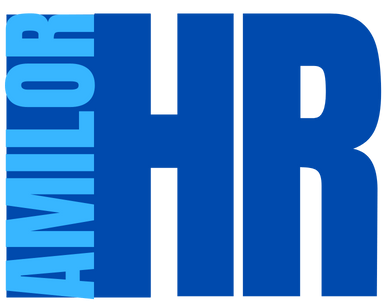Choosing the right computer for your business is not a task to be taken lightly. With a wide range of options available on the market, it’s essential to determine what your specific needs are in order to make an informed choice. This article will guide you through the most important considerations and help you select the idealbusiness computer, taking into account factors such as performance, portability and operating system requirements.
Assessing your business needs
Workload analysis
One of the first steps in choosing a computer for your business is to assess the typical workload. Simple administrative tasks require fewer resources than intensive graphics or software development work. For light office tasks, a laptop with an Intel Core i3 or i5 processor may be more than sufficient.
On the other hand, for more power-hungry activities such as 3D modeling, programming or large database analysis, an Intel Core i7 or even i9 processor will be more appropriate. RAM is also crucial: at least 8 GB of RAM for routine tasks, and up to 32 GB for complex jobs, guarantees optimum fluidity. Explore ledigitalpourtous’ special offers to discover great deals on this type of hardware.
Portability vs. performance
The balance between portability and performance is a key factor to consider. A laptop will allow greater flexibility, especially if frequent travel is part of your daily business routine. However, these devices can sometimes lack the robustness needed for heavy-duty work compared to desktop computers.
A lightweight, high-performance laptop such as a convertible screen can be an excellent compromise, offering power and versatility without sacrificing mobility. For those who need to work both in the office and on the move, opt for a lightweight option with good battery life.
Crucial technical specifications
Processor
The processor is often referred to as the computer’s brain. In a professional setting, opting for an Intel Core processor will generally guarantee fast, reliable performance. But which model to choose? Here’s a summary table to guide you:
|
Processor type |
Target applications |
Opportunities |
|
Intel Core i3 |
Office, Internet browsing |
Economical, low power consumption |
|
Intel Core i5 |
Intermediate tasks, multitasking |
Good value, versatile |
|
Intel Core i7 |
Demanding professionals (graphics, video editing) |
High performance, fast processing |
|
Intel Core i9 |
Intensive work (3D modeling, simulation) |
Excellent performance, handling of heavy tasks |
Random Access Memory (RAM)
RAM plays a vital role in your computer’s ability to handle multiple applications simultaneously, and to process common tasks quickly. For optimum performance, here are some recommendations:
- 4 GB: Sufficient for basic tasks such as surfing the web or using office applications.
- 8 GB: Ideal for standard use, including multitasking and use of advanced office software.
- 16 GB: Recommended for professionals using graphic design tools or video editing software.
- 32 GB and more: Necessary for extremely demanding workloads such as virtualization or complex 3D modeling.
Storage
The type of storage you choose will directly influence your computer’s start-up speed, as well as that of its applications. There are two main options:
HDD (Traditional Hard Disk Drive):
Traditional hard disks generally offer substantial storage space at lower cost. They are ideal for storing large amounts of data, but can be slower than modern alternatives.
SSD (Solid State Drive):
SSDs are much faster than HDDs, and significantly improve start-up and application loading times. They also make your computer more responsive overall. Ideally, you should combine a small SSD for the operating system and applications, with an HDD for storing large files.
Operating systems: Windows, macOS or Linux?
Windows
Windows is probably the most widely used operating system in professional environments. It offers extensive compatibility with a wide range of enterprise software, and benefits from regular support and updates. Its flexibility also means it can be customized to users’ specific needs.
macOS
If you’re in a creative sector such as graphic design or video editing, macOS could be the ideal option. Renowned for its stability and intuitive user interface, macOS also has the advantage of seamless integration with other products from the same brand, facilitating cooperation between multiple devices.
Linux
For companies looking to maximize security while reducing costs, Linux is a significant alternative. This open-source operating system is renowned for its robustness and reliability. However, it requires a certain amount of technical expertise to be fully exploited.
Other important criteria
Screen quality
A high-quality screen is essential for anyone working long hours in front of a computer. Full HD screens offer sufficient resolution for most professional tasks. For activities requiring greater precision, such as photo retouching or design, considering 4K monitors or dual-screen configurations can provide additional comfort.
Connectivity and ports
Make sure the computer you select has sufficient USB, HDMI, Ethernet and other connectors for your peripherals. Modern machines often feature USB-C ports, which enable fast data transfers and greater flexibility for connectivity.
For a mobile working environment, the use of docking stations can simplify the management of numerous cables and add extra functionality.
Some recommended models
Laptop computers
Among laptops, consider models renowned for their durability and performance. A notebook well known for its robustness is the Lenovo ThinkPad, appreciated for its ergonomic keyboard and enhanced security features. Other brands also offer interesting solutions for different budgets and technical needs.
Desktop computers
For a fixed workstation, consider ranges offering both easy upgradability and robust performance. Models equipped with powerful processors and large RAM and storage capacities will make your investment relevant over the long term.
In short, choosing the right computer for your business depends on a wide range of factors, from technical specifications to operating systems and the nature of the work involved. A careful assessment of your needs and the options available will help you to secure an efficient, long-lasting IT tool to drive your business forward.
